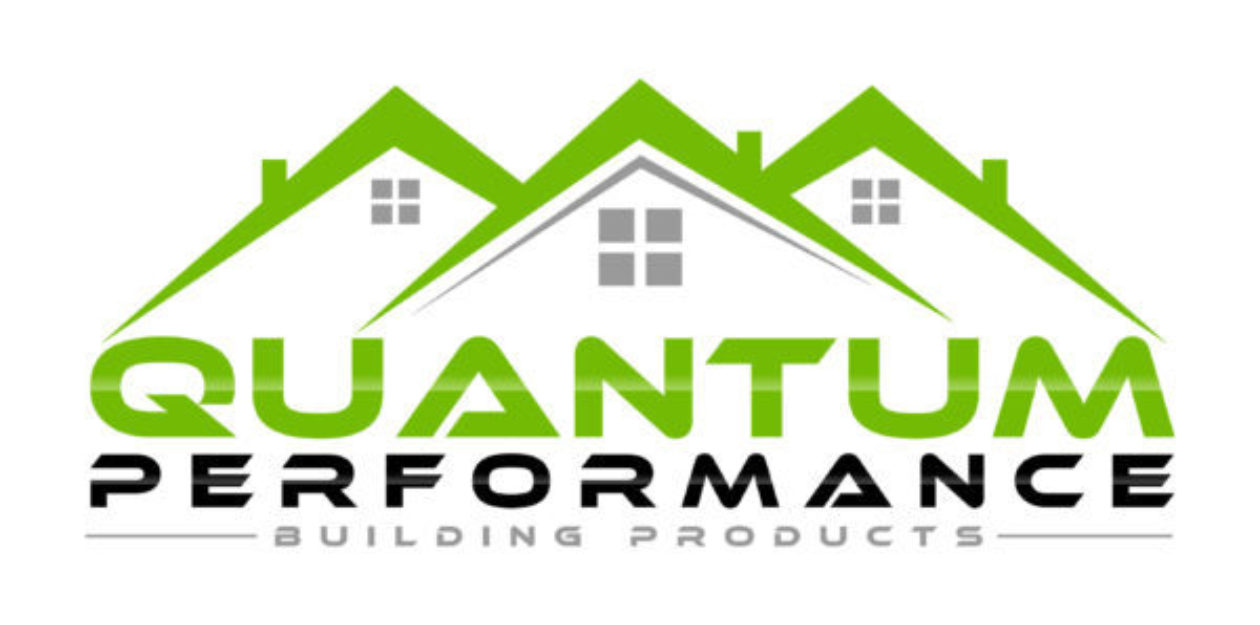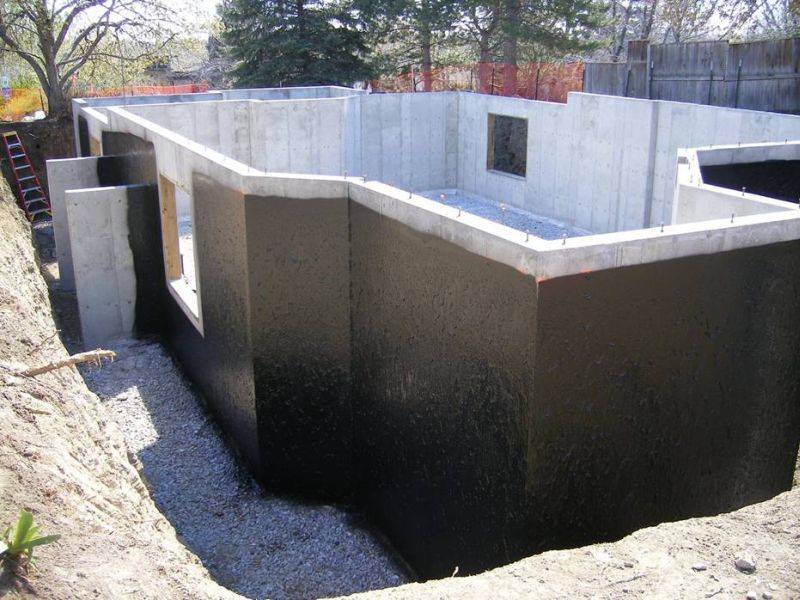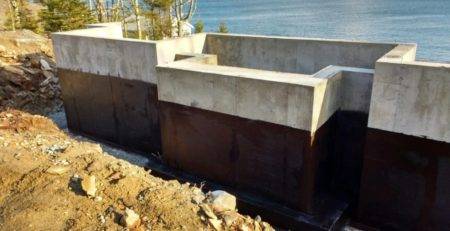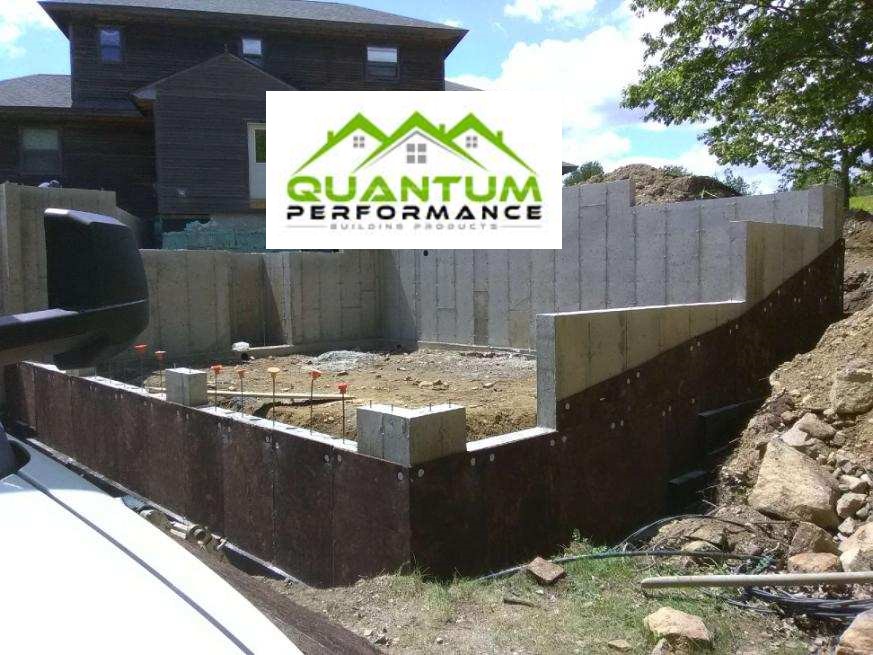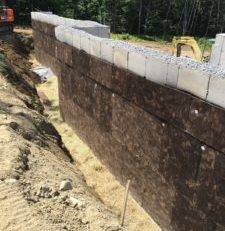Maine Waterproofing and Air Barrier Contractor
We Now offer a full line of above grade and below grade waterproofing products in our Maine building market.
- Below Grade spray applied water proofing membranes
- Above Grade spray applied Air Barriers
- Above Grade Spray applied Vapor Barriers
- Rigid Board installation for above grade and below grade applications
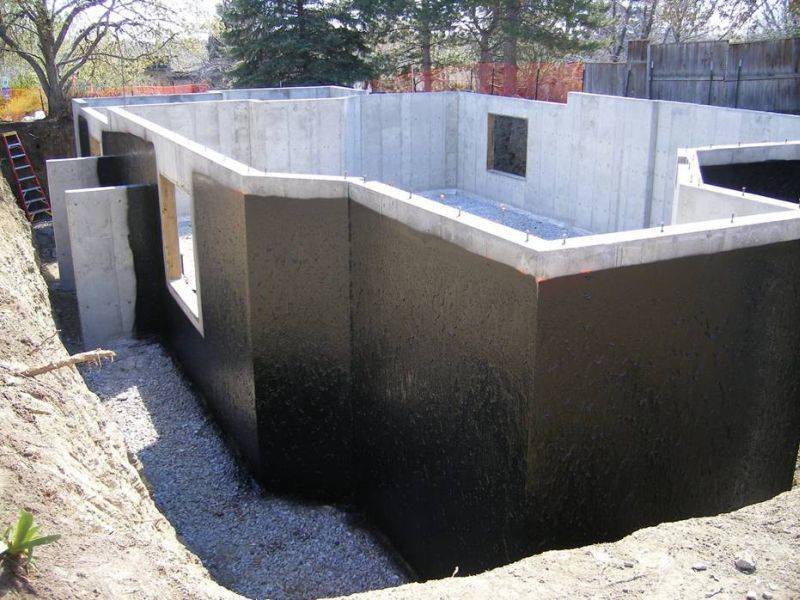
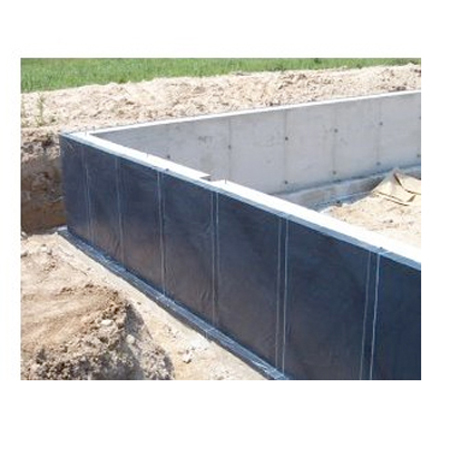
In construction, a building or structure is waterproofed with the use of membranes and coatings to protect contents as well as protecting structural integrity. The waterproofing of thebuilding envelope in construction specifications is listed under “07 – Thermal and Moisture Protection” within MasterFormat 2004, by the Construction Specifications Institute, and includes roofing material as well as waterproofing materials[citation needed].
In building construction, waterproofing is a fundamental aspect of creating a building envelope, which is a controlled environment. The roof covering materials, siding, foundations, and all of the various penetrations through these surfaces need to be water-resistant and sometimes waterproof. Roofing materials are generally designed to be water-resistant and shed water from a sloping roof, but in some conditions, such as ice damming and on flat roofs, the roofing must be waterproof. Many types of waterproof membrane systems are available, including felt paper or tar paper with asphalt or tar to make a built-up roof, other bituminous waterproofing, EPDM rubber, hypalon,polyvinyl chloride, liquid roofing, and more.
Walls are not subjected to standing water, and the water-resistant membranes used as housewraps are designed to be breathable to let moisture escape. Walls also have vapour barriers or air barriers. Damp proofing is another aspect of waterproofing. Masonry walls are built with a damp-proof course to prevent rising damp, and the concrete in foundations needs to be damp-proofed or waterproofed with a liquid coating, basement waterproofingmembrane (even under the concrete slab floor where polyethylene sheeting is commonly used), or an additive to the concrete. A potential problem in earth sheltered houses is too much humidity, so waterproofing is critical in these houses. Water seepage can lead to mould growth causing significant damage and air quality issues. Properly waterproofing foundation walls is required to prevent deterioration and seepage.
The penetrations through a building envelope need to be built in a way such that water does not enter the building, such as using flashing and special fittings for pipes, vents, wires, etc. Some caulkings are durable, but many are not a reliable method of waterproofing.
Also, many types of geomembranes are available to control water, gases, or pollution.
Over the past two decades, the construction industry has had technological advances in waterproofing materials, including integral waterproofing systems as well as more advanced membrane materials. Integral systems such as hycrete work within the matrix of a concrete structure, giving the concrete itself a waterproof quality. There are two main types of integral waterproofing systems: the hydrophilic and the hydrophobic systems. A hydrophilic system typically uses a crystallisation technology that replaces the water in the concrete with insoluble crystals. Various brands available in the market claim similar properties, but not all can react with a wide range of cement hydration by-products and thus require caution. Hydrophobic systems use fatty acids to block pores within the concrete, preventing water passage.
Sometimes the same materials to keep water out of buildings are used to keep water in, such as pond or pool liners.
New membrane materials seek to overcome shortcomings in older methods like PVC and HDPE. Generally, new technology in waterproof membranes relies on polymer-based materials that are extremely adhesive to create a seamless barrier around the outside of a structure.
Waterproofing should not be confused with roofing since roofing cannot necessarily withstand hydrostatic head while waterproofing can.
The standards for waterproofing bathrooms in domestic construction have improved over the years, due in large part to the general tightening of building codes.

